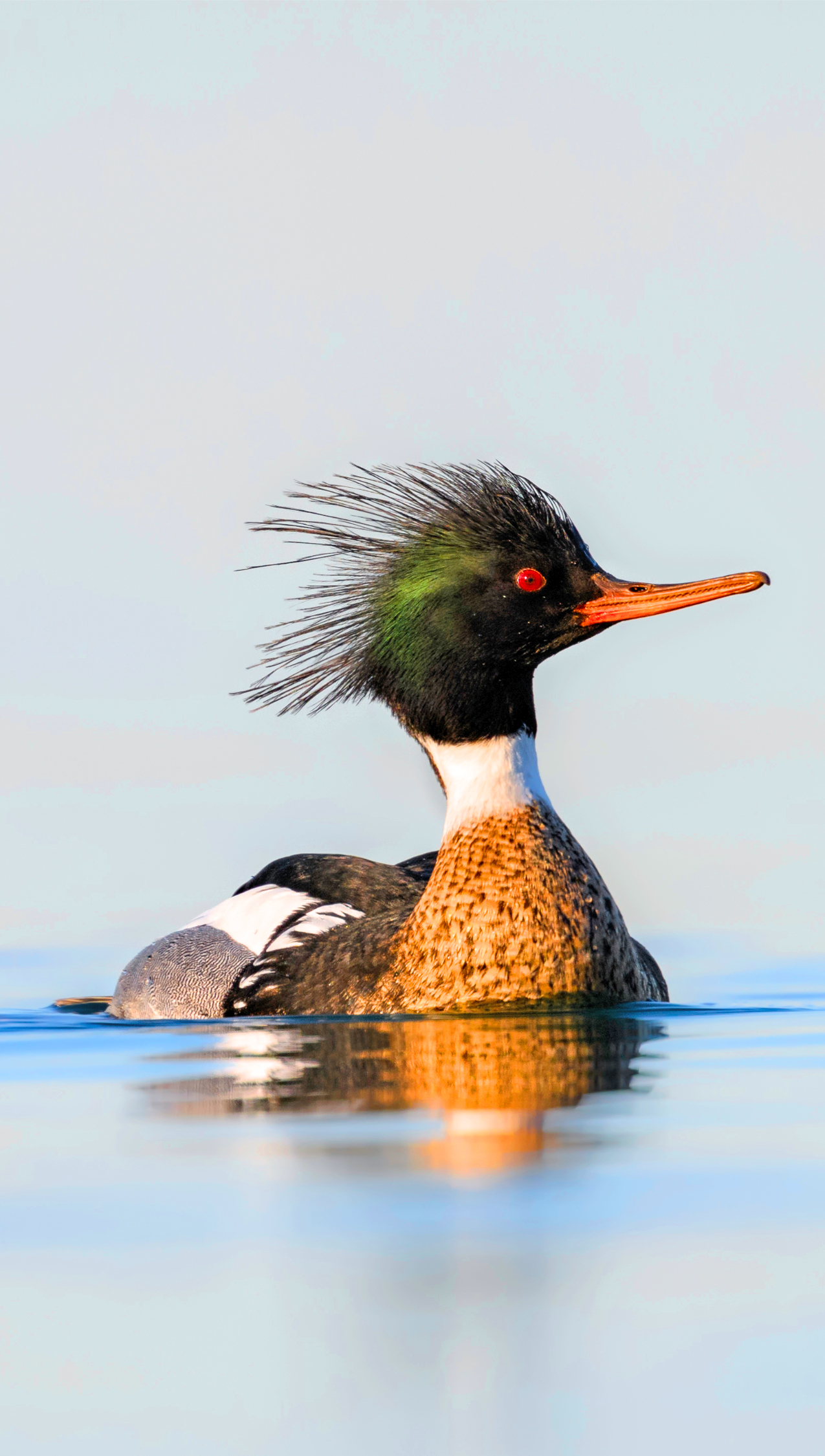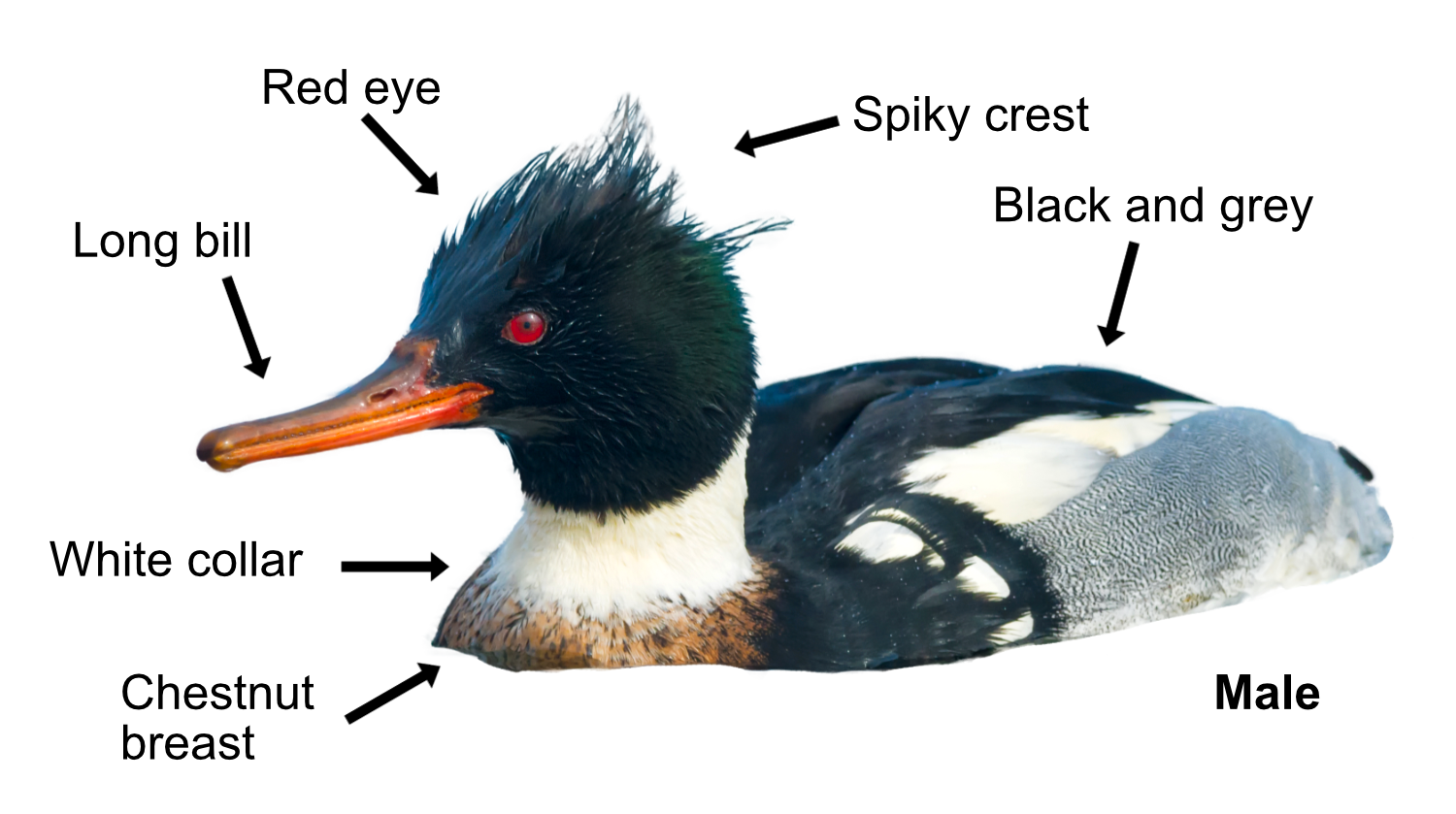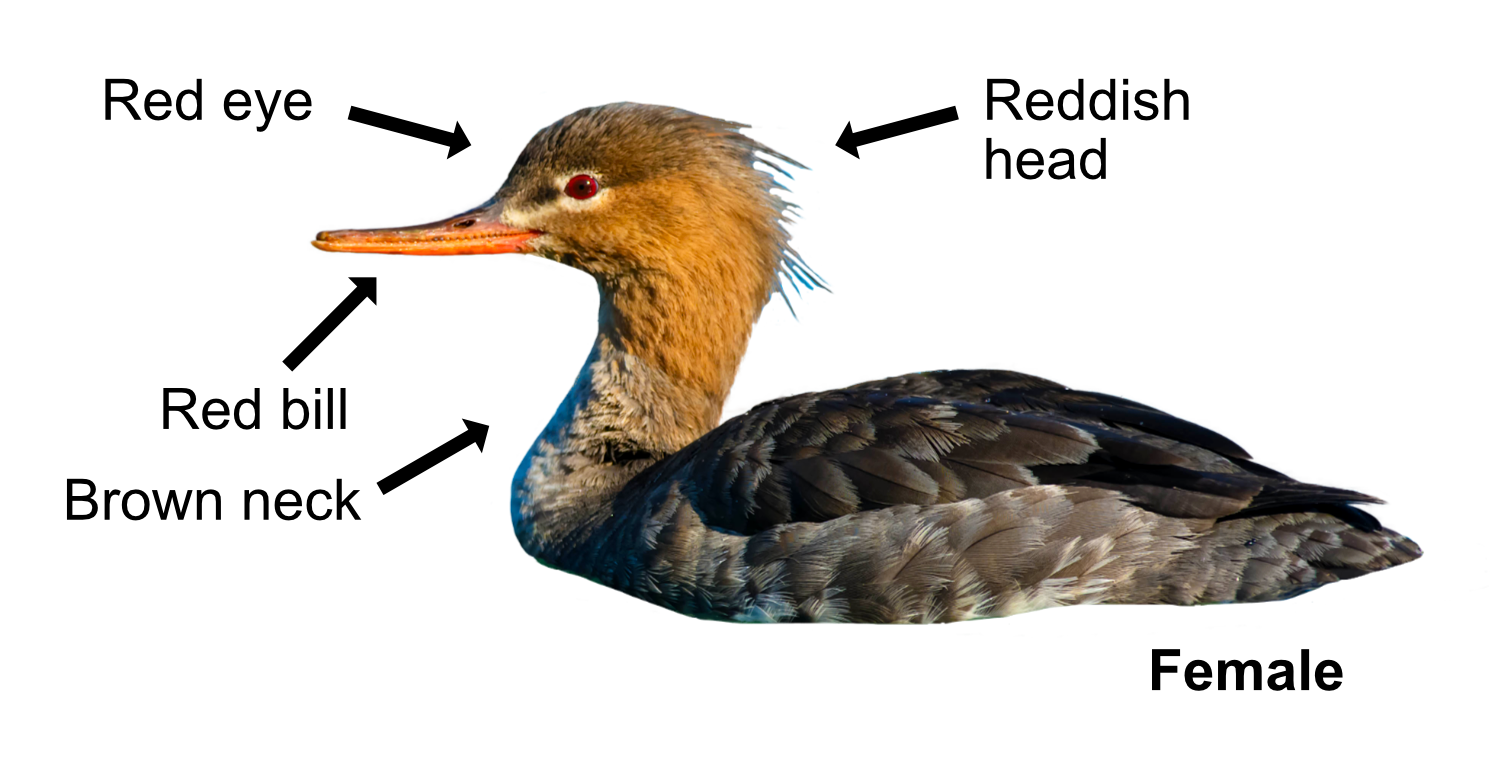
The Red-breasted Merganser is part of the sawbill family, so called because of their long, serrated bills, used for catching fish, which doesn't make them popular with fishermen. It is the fastest duck ever recorded, attaining a top airspeed of 100mph while being pursued by an aeroplane! It is most commonly spotted around the coast in winter, often forming flocks of several hundred, though it can also be found in shallow bays, inlets or estuaries.

Red-breasted Mergansers are long bodied diving ducks. They sit low in the water and have a very distinctive, elegant profile. The male has a green head with a 'just out of bed' spiky crest, a grey and white body, a spotted chestnut breast, and a white collar. The female has a reddish head merging with her brown-grey neck. Both have long, thin, red bills with serrated edges, orange legs, red eyes and white underparts. The key to separating them from Goosanders is that the neck and breast colours 'merge' rather than having an obvious line between. In flight, they have a prominent white lower wing panel and fly at an angle with their head higher than their feet. Mergansers are usually silent, only making a harsh "kar-r-r" call when displaying or nesting.

When feeding, they swim low in the water, regularly dipping their head below the surface before diving to chase fish. They sometimes hunt cooperatively in a line to drive fish into shallow water so they are easier to catch and their serrated bill helps them grip the slippery fish. Mergansers eat young salmon, trout, perch, herring, cod, eels, and also crabs and shrimps. They need to eat 15--20 fish per day. This has brought them into conflict with anglers, with birds being illegally killed to protect fish stocks, despite no evidence that Mergansers have an impact on fish numbers.
Merganser courtship starts in winter with bowing, stretching, and curtsying displays. Despite pairing up in winter, the Red-breasted Merganser breeds quite late in the year, laying their large clutch of 8-10 eggs in May or June. The nest is a depression in the ground amongst vegetation near water and lined with down. Like many ducks, the male deserts the female while she sits on the eggs. The eggs hatch after 31 days and the youngsters can feed themselves almost immediately. The youngsters will often come together with other broods to form large ‘creches’ that are looked after by a single female called an 'auntie'. Mum often leaves her young once they are in an auntie's care. The youngsters become fully independent 60 days later when they can fly. The parents do their moult between July and September and are flightless for 1 month, the males moulting first.
Red-Breasted Mergansers are mainly resident in Britain with a few others coming here in the winter from farther north. About 3,000 pairs breed here and up to 9,000 can overwinter. As numbers are falling, they have recently been added to the Red list.
Their Latin name is 'mergus serrator' from 'mergere' which means 'to dive', hence a diving duck, and 'serrator' is a 'sawyer' from the Latin 'serra' to 'saw'. The English name Merganser is also derived from 'mergus'.